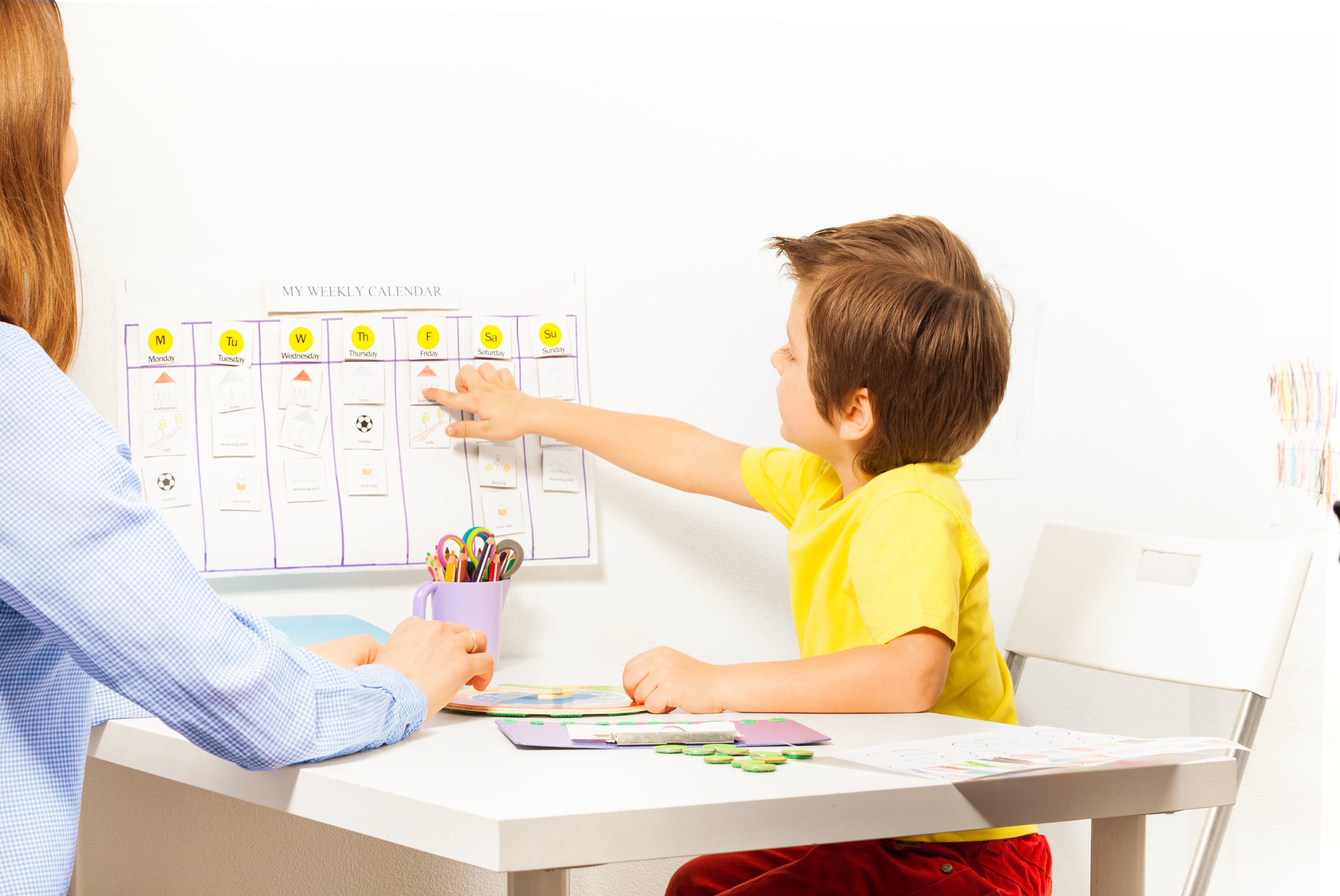Six Steps to Turn the Homeschool You Have into the Homeschool You Really Want
1. Understand What You Really Want
The first step to getting what you want is knowing what you really want. That sounds simple, but this is where people often get hung up on vague ideas or not-quite-thought-out scenarios.
How do you want your homeschool to feel? What do you want it to accomplish? Life coach Erin Michaelson recommends borrowing a trick from the home decorating world and creating an inspiration board for your homeschool. “Choose images and words that reflect the way you want your homeschool to feel,” says Michaelson. “Don’t overthink it — just grab the images that appeal to you and start pinning them on a wall or Pinterest board.”
Your dream board may look different from what you imagined — maybe you had visions of a nature-centered Waldorf environment, but all your pictures are of cozy book nooks. That’s okay, says Michaelson. “Often, we don’t know exactly what we’re looking for until we start to pin it down. Sometimes, that disconnect can make us feel permanently dissatisfied because we haven’t taken the time to understand what we really want — we’re working toward the wrong things and trying to figure out why we’re so unhappy.” Really focus on what you want — not on what seems affordable, or reasonable, or doable in your current situation. This is your chance to dream big.
2. Know Where You Are
You need to know where you are before you can figure out how to go anywhere.
You probably spend a lot of time thinking about what you’d like your homeschool to be, but it’s equally important to understand where you are. Start another inspiration board to capture your current homeschool life: What is a typical day like? What do you do all day? How do you feel? How does your day look? Find words and pictures that reflect your homeschool as it actually is right now — and be honest. There will probably be good parts and parts that aren’t so photogenic — that’s okay. Go ahead and include what feels true, which may include messes and arguments, unfinished projects and kids playing video games all day. This is where you are, and it’s essential to have a clear picture of where exactly that is.
You probably have a clear idea of the things that aren’t going right, and that’s part of this project. But don’t neglect the things that are working for you, whether it’s little things like finally finding the perfect pencil sharpener or bigger-picture things like figuring out the right bedtime routine. Here are some things to consider:
Curriculum. Think both about the curriculum you are using and the subjects where you aren’t using curriculum. What’s working? What isn’t? What’s getting done, and what’s perpetually on your yeah-I-should-really-get-around-to-that list? What do your kids look forward to, and what do they dread?
Routine. What do your mornings look like? How do your afternoons feel? How do your days wind up? Pay attention to the parts of your routine that work really well and to the parts that aren’t really working. When do you feel the happiest? When is everyone the most productive? Definitely consider the parts of your day that fall under the traditional homeschool umbrella — the times when you are learning or working in focused ways — but give attention to the rest of your day, too, which is an important part of your family’s regular routine.
Yourself. This is one of those things that you might not usually give a lot of your energy to thinking about, but how you feel about yourself can play an important role in your homeschool. How do you feel during the day? What do you look like? What’s the first thing you think about in the morning and the last thing on your mind before you go to sleep?
3. What’s Missing?
Here’s where things get fun: You’re going to plot a course to start transforming the homeschool you have right now into the homeschool you really want.
A lot of inspiration boards start and end with step one, but to really start to make your happiest homeschool come to life, keep going. Create a follow-up dream board for each of the important elements in your main inspiration board.
For example, if you collected lots of photos of happy families making art in a sunny room but art is always getting shoved off your to-do list, start a list called “Let’s Do Art.” Start adding images of what you imagine your ideal art homeschool would look like — cool pictures and projects, a big table, great art supplies, a gallery wall running up your staircase, etc. Do this for all the repeated images that you put together in step one: Maybe you’ll have a page for field trips or carschooling, a page for a super-organized homeschool room, or a page full of nature activities. You might have a page of a happy, well-adjusted student settling into college life or a page of mom outfits that don’t involve yoga pants — anything that you pinned to your dream board more than once should get fleshed out with more images and details. Don’t try to convince yourself that anything is unimportant or unnecessary — you may end up needing to set priorities down the road, but this is not that time. It’s okay if this process takes a while, too — there’s no need to rush.
“It’s tempting to jump right into thinking about what you need to do to get from Point A to Point B, but it’s important to really give yourself room to explore the Point B you want to reach,” says Michaelson. “Pretend that you have all the money/time/ space/whatever in the world: What does this particular thing you want look like?”
4. Let Go
Just as it makes sense to hone in on the specifics of what you really want, it’s important to spend some time considering the parts of your current life that you’d like to change.
Make a page for each thing that’s not working: A schedule that feels too hectic, arguing kids, a perpetual mess, that permanently frazzled feeling you have at the end of every week — whatever it is that’s making your homeschool feel stressful or boring or unhappy. Collect images and ideas for changing these difficult moments: You may want to search for ideas online or in magazines or ask friends for advice about strategies that have worked for them.
“A lot of times, we get so caught up in trying to figure out what’s causing a problem that we never actually address the problem,” says Joshua Holland, a career advisor who specializes in helping people align their career paths with their passions. “Sometimes, though, your time is better spent moving forward in a productive way.”
Instead of wondering why your kids grouch out over morning math or why you fall apart every night after park day, think about what you might be able to do differently to change that problem part of your day. Knowing what you want to avoid is just as important as knowing what you want to concentrate on.
5. Start Making Changes
Only now is it time to start actually making changes — and that’s because now you know what you really want and how to get it.
You can start with adding things you want or with trying to erase things that you aren’t happy with, but it’s usually more fun — and maybe more straightforward — to begin with adding something new. For example, if your wish-list includes more nature time, you might start by checking out a stack of nature guides from the library to familiarize yourself with local plants and wildlife or sign up for a naturalist-led hike at a nature center. Start spending more unstructured time in the backyard, or set up a bird feeder near the window. Add a daily nature sketch to your journal or challenge yourself to take a nature photo every day. Your goal here isn’t to jump in with a new curriculum or a structured plan of study; instead, you want to incorporate your new experience into your life. Once it feels like it fits naturally into your routine, you may want to look for a curriculum or classes, but for now, you just want to get comfortable.
“Give yourself space to figure out how this thing you want for your homeschool fits into your actual life without the pressure of spending lots of money or time on a curriculum,” says Michelson. In other words, don’t be tempted by quick-and-easy solutions: Some things you will try during this time will be revelatory — they may change your homeschool forever and for the better—but many will just be okay and some will be total failures. Commitment is the last thing you want right now — the thing you need is freedom to figure out what works and what doesn’t.
Follow the same procedure to change the things that don’t work. Try earlier bedtimes or saving math until after lunch if you feel frazzled. Sort and toss artwork every week to minimize clutter, or set up a specific shelf for library books so they don’t get lost. Experiment with lots of small, different things to find the ones that work for you.
6. Move Forward
The process of creating your ideal homeschool is an ongoing one. Every year, the rhythms and needs of your homeschool will change, and you’ll begin this process all over again.
This is a continuous process, so keep updating your dream boards as your experiences dictate: Maybe free access to all the art materials got too messy, and art study works better one medium at a time.
Pull those overstocked art cabinets off your inspiration board and replace them with station-style art storage. Maybe school outside is distracting, and it makes more sense for your family to do hands-on learning inside. Update your dream board with photos of attractive learning spaces. You may find that the more you focus on reading aloud, the better your homeschool works — add more pictures of books and reading to your dream board. Images and ideas will go up and come down — that’s totally normal. Your homeschool is a work in progress.
You can also update your real homeschool board as you find things that work for you: Add that great science curriculum or the writing program that really worked. Add the covers of books you’ve read together and loved or posters from movies that had an impact on your homeschool. Take photos of your own happy, smiling kids to paste on your board, or add tickets from movies, museums, and concerts. Let the board of your homeschool life gradually evolve to reflect your dream homeschool—the one you're actually living.
This was originally published in the summer 2017 issue of HSL.
































A creative learning space is less about actual stuff and more about giving your children space to explore ideas in different ways.